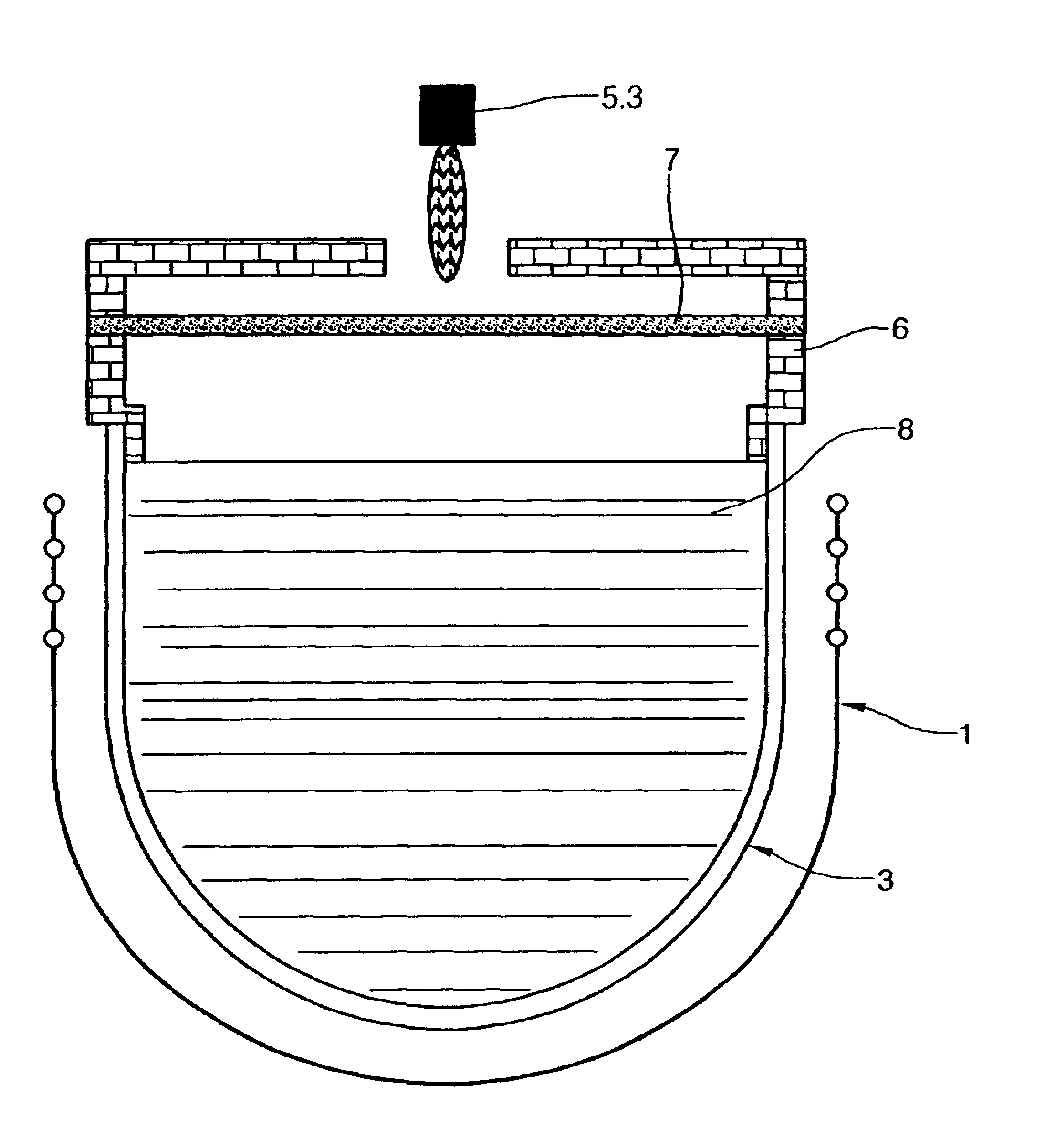Method for melting or refining glasses or glass ceramics
a technology of glass ceramics and glass ware, which is applied in the direction of glass shaping apparatus, lighting and heating apparatus, furnace components, etc., can solve the problems of inability to heat the melt surface special, lack of high long-term stability and high breaking strength, and refractory material
- Summary
- Abstract
- Description
- Claims
- Application Information
AI Technical Summary
Benefits of technology
Problems solved by technology
Method used
Image
Examples
Embodiment Construction
Coil 1 shown in FIG. 1 has endless-screw-shaped running windings 1.1, 1.2, 1.3. In the present case, the windings lie in a horizontal plane, precisely in the direction of glass flow 2. The inside diameter of the inner winding in the direction of glass flow 2 is relatively large. It can amount to a multiple of the inside diameter perpendicular to the direction of glass flow 2.
The coil 1 shown in FIG. 2 is also shaped like an endless screw and has windings 1.1, 1.2, 1.3. It is understood that a much larger number of windings is also possible. This coil is slightly curved in a plane. The winding segments running in the direction of glass flow 2 lie on both sides of the channel, which is not shown 1D here.
The windings are subdivided in the coil shown in FIG. 3. Winding segments are again recognized, which run in a straight line parallel to the direction of glass flow. The curved winding segments lie at the beginning and the end of the channel. One-half of the windings run below and one-...
PUM
| Property | Measurement | Unit |
|---|---|---|
| Energy | aaaaa | aaaaa |
Abstract
Description
Claims
Application Information
 Login to View More
Login to View More - R&D
- Intellectual Property
- Life Sciences
- Materials
- Tech Scout
- Unparalleled Data Quality
- Higher Quality Content
- 60% Fewer Hallucinations
Browse by: Latest US Patents, China's latest patents, Technical Efficacy Thesaurus, Application Domain, Technology Topic, Popular Technical Reports.
© 2025 PatSnap. All rights reserved.Legal|Privacy policy|Modern Slavery Act Transparency Statement|Sitemap|About US| Contact US: help@patsnap.com



